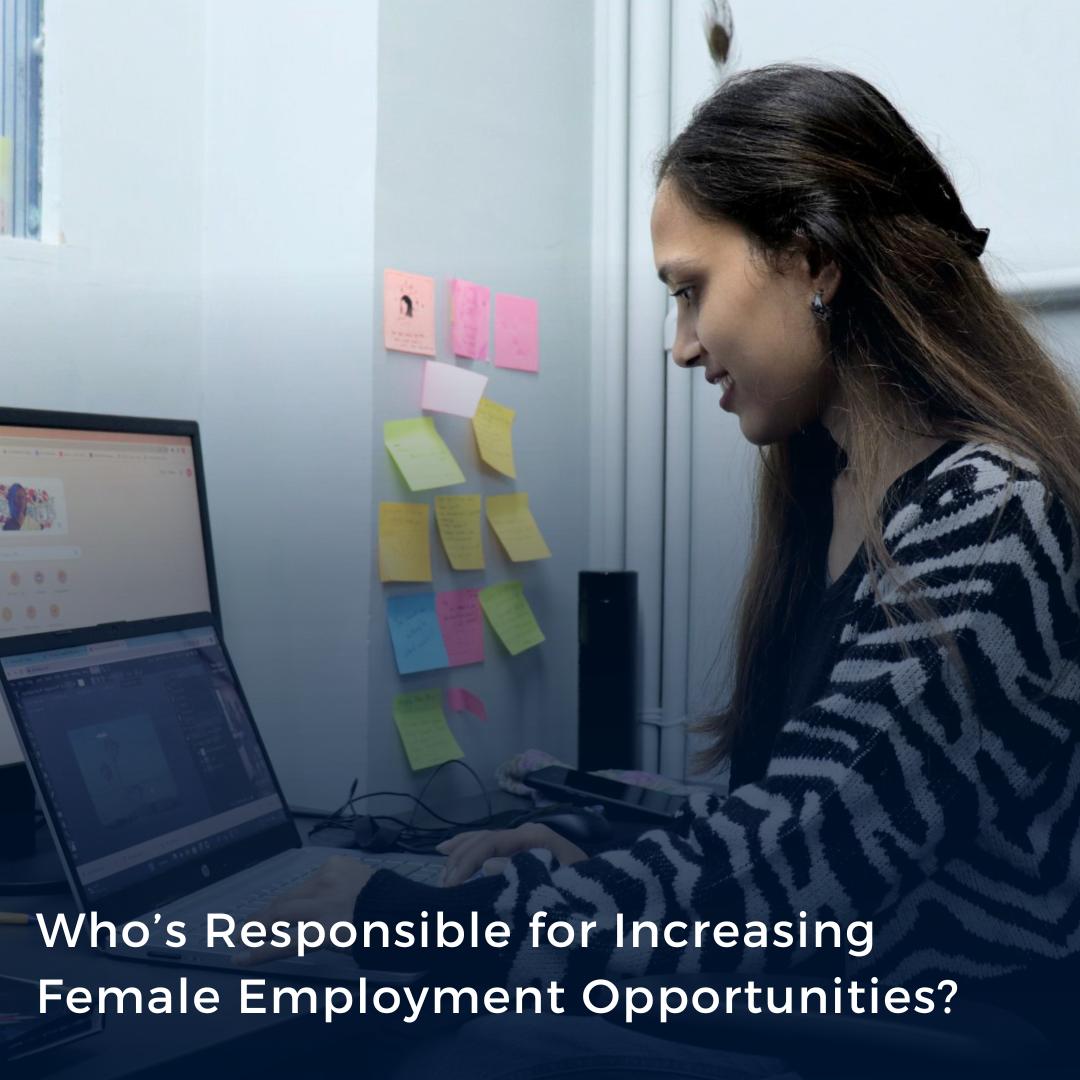CATEGORIES
#Careers #External Article #Women EmpowermentOverview:
- What company wouldn’t want more innovation and productivity, less employee turnover, and more emotionally intelligent teams? These are namely some of the dynamics that statistics show women bring to the workplace.
Increasing opportunities for women in the workplace is a global issue, recognized within the 5th Sustainable Development Goal(SDG) by the United Nations. Especially in developing countries, such job opportunities are hindered by cultural and educational attitudes that keep them out of STEM careers or the CEO’s chair. Add in rigid and dated corporate policies and the opportunities diminish even further. For many women, change seems to come slowly and begs the question, “Who should be generating more employment opportunities for women?”
A New Outlook in Corporates
Women who work in a predominantly male environment or rise to C-suite positions in major corporations are still considered “trailblazers”. Currently, only 8% of Fortune 500 firms have women in the top position of CEO and the statistics are not much better elsewhere. However, as leaders realize the benefits of having a diverse workforce, they are trying to attract more women. Outside the Fortune 500, smaller companies and organizations are using training initiatives, mentoring, and appealing work policies to increase employment for women. Firms that provide progressive perks such as nap rooms and overflowing snack tables get attention and popularity amongst press and workers alike, but the issues most important to women are equal pay and flexible schedules that allow them to more easily juggle caregiving and family obligations.
Women are more likely to stay with an employer who gives them more independence with respect to how they structure their time and tasks. A study by Perceptyx found that women remain with organizations when they feel empowered to decide how to handle their work themselves, including fashioning their work-life balance to ensure productivity while fulfilling the demands of caregiving and family.
Companies that wish to attract female employees must do more than repeat catchphrases such as “diversity and inclusion”. Organizations that understand that job-seeking women want benefits beyond a paycheck can make themselves more appealing by connecting female applicants with other women within the company, addressing family policy concerns, and providing equitable pay and advancement opportunities.
Companies looking to progress and maintain their success will do well to support the United Nations’ SDG of promoting economic growth under target 8.5 on providing decent work and equal pay for all women and men (including young people and persons with disabilities) by 2030. Gender equality itself is an important UN SDG and increasing the numbers of females in employment would lead to a more sustainable economic growth globally.

A New Trajectory for Young Women
As with the age-old question about the chicken and the egg, what comes first in addressing this problem? On one hand, women who are currently caregivers and have graduated from school need appropriate training and initiatives in current skills that can help them achieve financial independence. On the other, the stage must be set early for school-age females to be able to change their entire life trajectory—and their career in particular.
China’s 14th Five-Year Plan, which prioritizes gender equality, UNESCO’s goal to empower women and girls with education, autonomy over their self and future, legal aid, etc. and the joint program Girls in STEM from the European Commission and Erasmus+ are some of the initiatives launched to train and prepare upcoming generations of females to choose careers beyond what was traditionally possible for their grandmothers.
Although seeing countries around the world working to improve professional opportunities for women is encouraging, some advocates would say that such efforts are years overdue.
Grassroots Efforts for Girls and Women
The good news is that people aren’t waiting for governments to make the necessary changes in this area. Empowered individuals have always led the charge for progress, whether the issue is equal rights, environmental concerns, or war. In Bangladesh, the development organization BRAC is giving formerly oppressed women a platform for raising awareness of and advocating for women’s rights education.
Girls Who Code has branches in the United States, Canada, United Kingdom, and India that not only teach computer programming skills but also, and more importantly, create mentors, role models, and peer connections among members that help to support and empower them along the way and into the future.
Similarly, Girl Power Talk is an organization based in India that focuses on gender and pay equality, STEM education, and global growth opportunities for the leaders through interaction and collaboration with international mentors and clients. Its primary goal is educating and empowering young women in India (and eventually worldwide) to seek professional opportunities that transcend traditional gender roles.
Mentorship models like the aforementioned contribute to the United Nations SDG for the empowerment of women in technology. Similarly cultivating equal opportunities for women in leadership positions across political, economic, and public sphere is another step closer to achieving the UN goals for gender equality.

Giving Women a Hand Through Mentoring and Support
Businesses and governments are not the only forces that can initiate change and increase employment opportunities for women. Women can do so for themselves, too. Female employees who work in male-dominated industries can form networking groups in their industry or establish mentoring programs. Such attempts are likely to inspire upper management to adopt them or follow suit.
Empathy and collaboration are recognized as the primary soft skills women bring to the workplace, which makes mentoring a natural channel for the same. Yet 63% of women have reportedly never had a formal mentor.
A mentoring relationship can involve something as simple as a structured conversation with a specified purpose or outcome, such as career planning, understanding a workplace’s culture, or skill development. Although women might feel more comfortable seeking mentorship from other women, that doesn’t discount their male counterparts. The diversity could contribute to a more collaborative workplace atmosphere.
Geography doesn’t have to circumscribe mentoring, either. The Association Mauricienne des Femmes Chefs d’Entreprises launched its Business Without Borders digital mentoring program in 2020, while more than one thousand mentees in 15 countries participate in the Women’s Global Mentoring Program.
Again, increasing employment opportunities for women doesn’t fall on the shoulders of just the government or big business, whose responsibility reflects their concentration of influence, control and financial resources. Employers and workers must consciously seek an inclusive work culture that supports women leadership and emboldens their collective voice. The optimal collaborative environment can only be created with proactive male mentors, allies, and advocates. This inclusive approach will yield better relations, opportunities, and ultimately, more success and sustainable development for everyone.
Originally Published on Impact Entrepreneur



